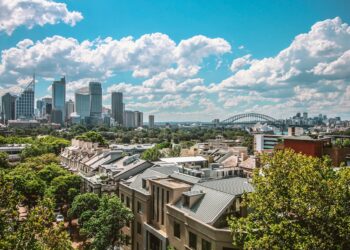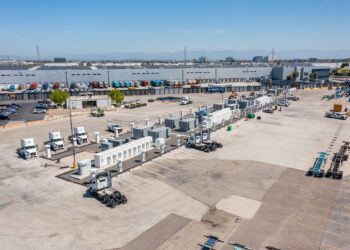US government investment into major green innovations runs into billions of dollars and any country with a free trade agreement with the USA looked set to benefit but the world’s biggest producer of lithium Australia may lose out because of Chinese ownership
The Biden administration is pouring billions of dollars in subsidies to companies building the US future in emission reducing technology under the $US369 billion Inflation Reduction Act and the $US550bn Infrastructure and Jobs Act.
Manufacturers, recyclers and suppliers in the lithium battery sector are among the beneficiaries because of their role in powering electric vehicles and offering power storage solutions and they would use raw materials supplied by nations with Free Trade Agreements with the USA. The subsidies are widely viewed as positives for job creation and ensuring the USA remains at the forefront of new green tech.
For the battery sector lithium suppliers at mines in Australia had expected to benefit but across the country over the past two days there has been upset that the Chinese investors they’ve encouraged may now exclude some of them from the US market.
On Saturday (December 2) the Biden administration clarified which foreign suppliers will be considered eligible for subsidy money and even if you are a friend of the USA, if you have investment from a ‘Foreign Entity of Concern’ (FEOC). The Department of Energy released a 23-page report defining the “covered nations”: “People’s Republic of China (PRC), the Russian Federation, the Democratic People’s Republic of North Korea, and the Islamic Republic of Iran.”
“There is $6 billion to support US domestic battery material processing, manufacturing, and recycling and the new rules direct DOE to prioritize material
processing applicants that will not use battery material supplied by or originating from a “foreign entity of concern” (FEOC).”
Australia was the largest lithium-producing country in the world in 2022, but its reserves long term are second to Chile, which has by far the largest lithium reserves.
Western Australia is home to five of the world’s biggest lithium mines, whose combined reserves exceed 475.24 million tonnes but China plays a significant role in the Australian lithium sector, as the dominant customer and an investor. Chinese firms like Ganfeng and Tianqi — with substantial shares in major Australian mines like Mt Marion and Greenbushes — may hinder the Australian miners’ subsidy eligibility.
The Greenbushes lithium project is located in Greenbushes, Western Australia. It is owned by Chinese mining company Tianqi Lithium and operated by Talison Lithium, which is 51% owned by Tianqi Lithium.
The Greenbushes mine is estimated to contain proven and probable reserves of 86.4 million tonnes grading 2.35% Li2O. It is installed with two processing plants, which produce technical and chemical-grade lithium concentrates. Since 2014 the Albemarle Corporation is based in Charlotte, North Carolina, owns the other 49%.
The Greenbushes mine has produced an estimated 45% of Australia’s lithium in the past year and is considered the world’s largest and highest-quality hard-rock lithium mine.
“However, players such as Wesfarmers and Liontown Resources which have built non-Chinese lithium businesses in Western Australia may see the rewards,” says AU Investing.com in its analysis of the US DOE report.
“Australian miners may need to reassess their share registers, ensuring that non-Chinese shareholders hold at least 75% of their stock. The emphasis on non-Chinese involvement could significantly impact Australian lithium exporters, like Pilbara Minerals, and potentially benefit Australian nickel miners like BHP, IGO and Wyloo, who have less Chinese investment.”





